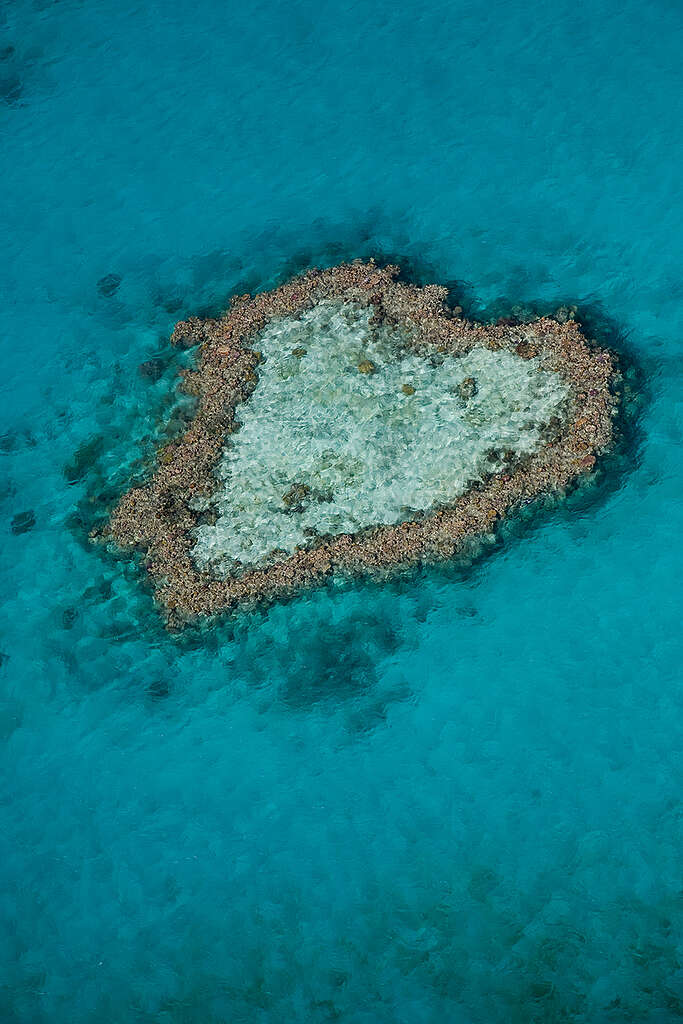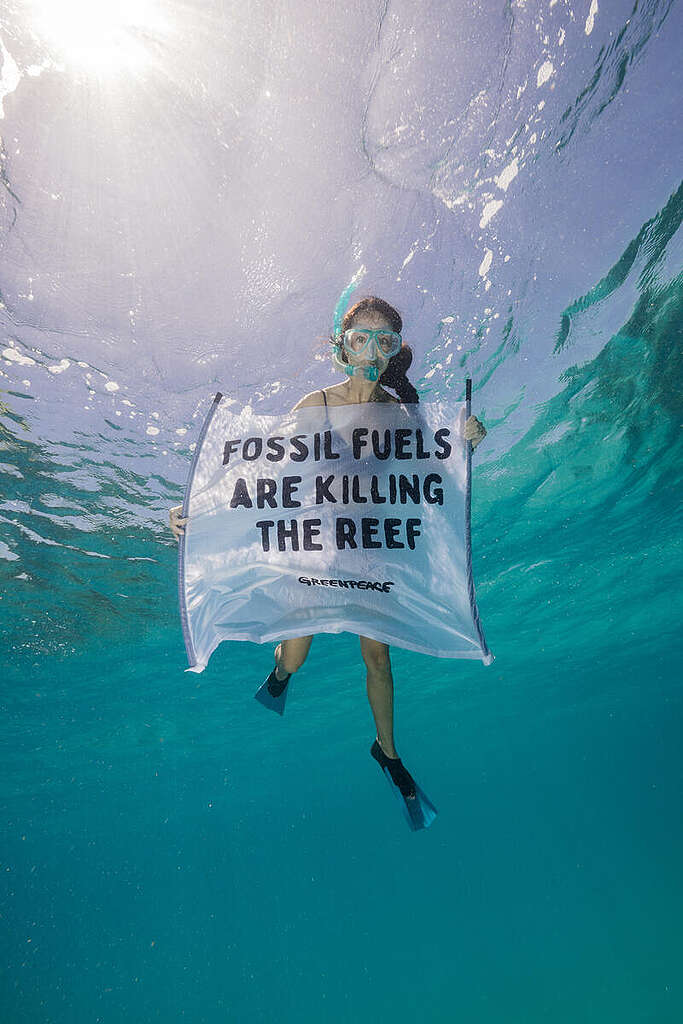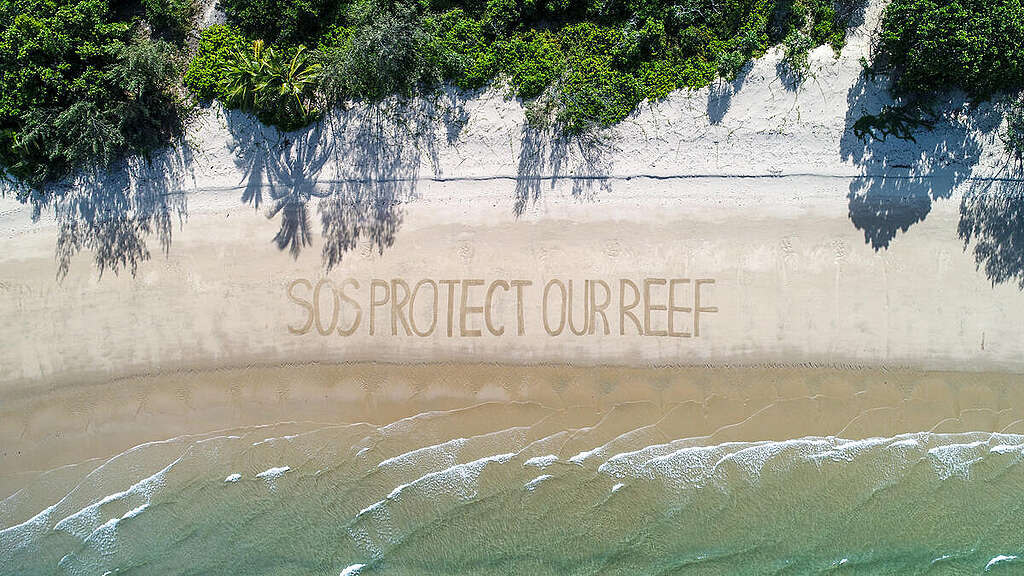An Australian Icon: The Great Barrier Reef
The Great Barrier Reef is a living thing – precious and fragile. It’s the only living thing on earth that is visible from space. Climate change and the fossil fuel industry have been constant threats to the Great Barrier Reef and it needs protecting now more than ever.


We call on the Australian Federal Government to protect the Great Barrier Reef from the impacts of climate change by replacing all coal-burning power stations with clean and safe renewable energy by 2030 and committing to net-zero by 2035.
Sign petition
The problem
Australia’s beautiful Great Barrier Reef is under threat and in a state of emergency. As much as half of the Reef may be dead following back to back coral bleaching events in recent years.
Why is the Reef’s coral bleaching?
Tiny algae live in the tissue of coral providing it with food, and also giving coral its colour. As the ocean absorbs more and more CO2 from the atmosphere, ocean temperatures and acidity levels in the water rise. The algae become stressed and leave the coral – taking with it the coral’s source of food and its colour. The coral turns white and ‘bleaches’.
Biodiversity on the Reef
The Great Barrier Reef is an irreplaceable, natural wonder of the world. It is home to more than 1500 species of fish, 30 species of whales and dolphins, and 133 species of sharks and rays.
These unique creatures, some found only in the Reef’s waters, depend on this complex marine ecosystem for survival. If the Reef dies – where can they go?
Your donation can help secure the future of our oceans
Our work is 100% funded by people like you. A regular donation, every 4 weeks is the most effective way to ensure we can fight daily to ensure world leaders act urgently to secure the future of our oceans and all life on Earth.
Keep informed
Together we are part of a growing, global movement determined to bring about the changes our planet desperately needs. Sign up to receive updates on our campaigns.
